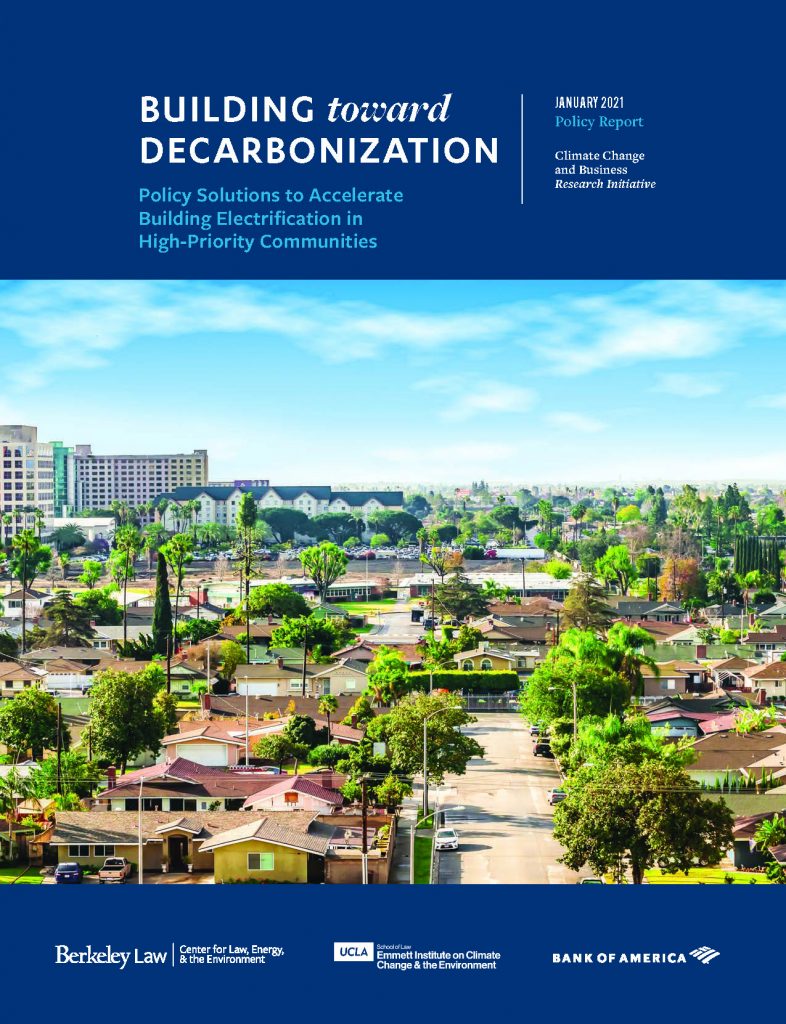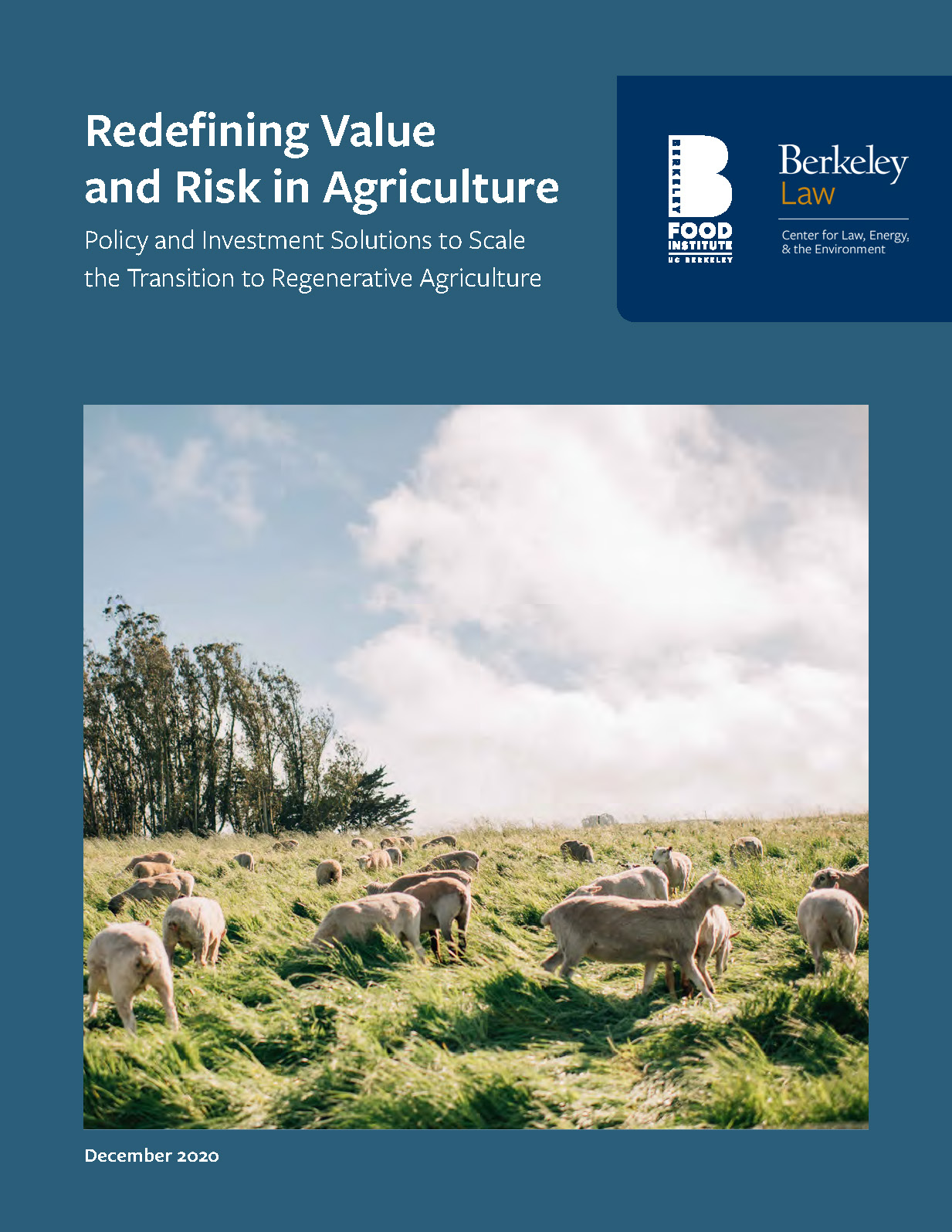
It’s a double-shot of shows on KALW 91.7 FM today, my last two of the year. First, this morning on Your Call’s One Planet Series at 10am PT, we’ll discuss how climate science is being politicized in schools with investigative journalist Katie Worth, author of the riveting new book, Miseducation: How Climate Change Is Taught in America.
In the second half of the show, we’ll cover the mental health impacts of air pollution with reporter Kristina Marusic.
Then tonight at 6pm PT, I’ll be co-hosting State of the Bay to assess recent decisions rejecting or delaying housing projects by the San Francisco Board of Supervisors. UC Davis Professor of Law Chris Elmendorf will help us understand the statewide legal implications of these anti-housing decisions, in particular the recent delay of a 500-unit housing development near BART.
Then we’ll discuss the state of the Bay Area’s “slow streets” movement, which close streets to most traffic for improved pedestrian and bike safety. What do you think about these measures? Ask our guests Eillie Anzilotti of the SFMTA and community planner Leah Chambers.
Finally, you’ll hear my interview with with Phil Ginsburg, General Manager of the San Francisco Recreation and Parks Department, who will discuss some of the holiday festivities available in the city’s public spaces.
Tune in at 91.7 FM in the San Francisco Bay Area or stream live at 10am PT for Your Call and then again at 6pm PT for State of the Bay. What comments or questions do you have for these guests? Call 866-798-TALK to join the conversation!

Today marks 30 years since the outbreak of a devastating wildfire that swept through the Oakland-Berkeley hills of the San Francisco Bay Area in 1991. More than 3,000 homes burned in the fire, and 25 people lost their lives.
I happened to know two of them: my beloved 6th grade teacher Dr. Phil Loggins and my high schoolmate Gabriela Reed. I had just turned 15, and now 30 years later it still hurts deeply to think of their loss and the lives they could have lived — and touched — since then.
Dr. Loggins, 51 when he died in his carport that day, overcome by the smoke and heat, was one of the most influential and impactful teachers I had. His “doctor” title alone is a big indication. He was a science Ph.D who decided to teach public school sixth graders like me about both the natural world and the meaning of personal growth.
His approach was unusual and effective. For one thing, he loved animals and included live versions of them in his lessons. His classroom was filled with tanks of snakes and rodents. In science class, we learned about the taxonomy of classifying plants and animals, while laughing in amazement as Dr. Loggins let his boa constrictor snake named Honey Buns encircle us on our shoulders.
He nurtured our creativity, reading books aloud to the class in theatrical voices so we could appreciate spoken rather than just written language. In one memorable exercise, he turned off the overhead lights and played the opening instrumental theme to the 1986 movie Top Gun, asking us to let our thoughts soar with the music. With the lights back on and inspiration achieved, we then went about our creative writing with the images we had seen in our minds.
He had a profound love of nature, which he wanted to instill in us. On a weeklong school camping trip near Point Reyes, he had us go on solo hikes to be alone with our thoughts in the wilderness, so we could appreciate the world around us without the distraction of conversation and friends (what he would have thought of smart phones). He showed us photos he took on a projector of amazing scenes from his journeys in nature. It took on added poignancy that he once displayed a photo of a beautiful fallen leaf, bright in primary colors, and he reminded us, “even in death, life can be beautiful.”
I wonder how much of the work I do today on climate change and environmental preservation is due to his influence. He taught hundreds of kids in his too-short career, and I know his legacy lives on in part through his students and those to whom we’ve tried to pass on his lessons.
Gabriela Reed was 18 when she died in the fire, visiting a parent and trapped in her car as the fire exploded in heat and size. She was two years ahead of me, a senior in high school, but she had sat next to me in intro Spanish class, and I had gotten to know her a bit. She had a wonderful and mischievous sense of both humor and fun, quick to laugh and to support her friends. She had such youthful energy and vibrancy that I still struggle to imagine she’s not with us anymore.
At the time of the fire, I attributed their deaths and the other tremendous losses that day to an act of nature. But now I know, from working on wildfire issues here in California, that what happened that day was in fact preventable.
The brutality of the fire was the result of decades of fire suppression and lack of vegetation management. In simpler terms, the area was overgrown with trees and shrubs, including flammable and non-native Eucalyptus trees, which were growing too close to homes that featured vulnerable wood-shingled roofs. When the fire hit, it should have been a “cool” grass fire that would never leap to the crowns of well-spaced, large native trees like oaks and redwoods. It should have been easily contained, and if not containable, it should have moved slowly enough for residents to evacuate safely.
Going forward, we need to dramatically boost fuel treatments across the state, as climate change makes these wildfire conditions even more severe. More people are now aware of the fire danger and the impacts of smoke, so the politics is supportive. But the work is still happening too slowly, as more fires burn and more lives are devastated and lost.
Nothing can be done now to change those tragic events 30 years ago, but I hope that remembering the suffering and lives lost will increase the urgency of the task. And in the meantime, I at least will take a moment to remember and grieve these loved ones taken from us too soon.
Rest in peace, Dr. Loggins and Gabriela.
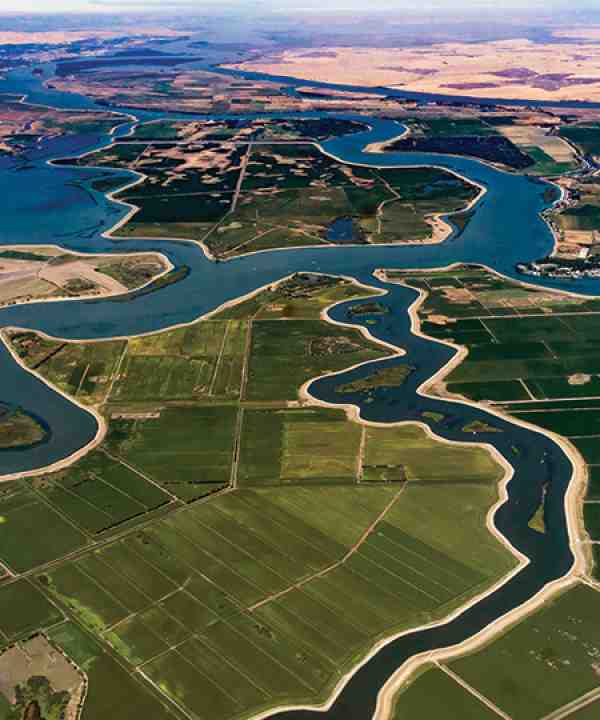
Tonight on State of the Bay we’ll talk about ways to make the Bay Area more water resilient, with:
- Dr. Newsha Ajami, Director of Urban Water Policy with Stanford University’s Water in the West and a member of the San Francisco Public Utilities Commission
- Wade Crowfoot, California’s Natural Resources Secretary and former chief executive officer of the nonprofit Water Foundation
Plus we’ll get an update on the Elizabeth Holmes trial with Sara Randazzo, Legal Business Reporter for The Wall Street Journal.
Finally, we’ll hear about the the fastest growing sport in the US – pickleball! Joining us will be Patricia Strazzi, the first female certified pickleball coach in Northern California.
Tune in tonight at 6pm PT on KALW 91.7 FM in the San Francisco Bay Area or stream live.
What would you like to ask our guests? Post a comment, tweet us @StateofBay or send an email or voicemail to StateofBay@gmail.com. You can call 866-798-TALK with questions during the show!

On today’s Your Call at 10am PT on KALW, we’ll discuss the ecological impacts of wildfires. How are animals, endangered species, wildlife and their habitats affected by wildfires? We’ll be joined by:
- Justin Augustine, Senior Attorney at the Center for Biological Diversity
- Alison Hermance, Director of Communications at WildCare
Later in the show, we’ll talk about how California is doing on forest management. The state has only performed prescribed burns on approximately 35,000 acres this year, while experts say that tens of millions of acres still need to be managed statewide. What is holding the state back? We’ll be joined by:
- Don Hankins, pyrogeographer and professor of Geography and Planning at California State University at Chico
- Bill Tripp, deputy director of the Karuk Tribe’s Natural Resources Department in Northern California
What questions do you have? Tune in at 91.7 FM in the San Francisco Bay Area or stream live at 10am. Call 866-798-TALK with questions or comments!
All-electric buildings may soon become the norm, bringing benefits for indoor air quality, public safety, and greenhouse gas emissions. The technology has greatly improved to make this transition feasible: electric heat pumps, electric water heaters and induction cooktop appliances are widely available and becoming increasingly affordable.
But as communities phase out natural gas in buildings, who will be left paying for the existing natural gas infrastructure? For those unable to make the transition, costs will go up. As a result, states like California have an urgent need to develop a strategy for building decarbonization, as our January Berkeley/UCLA Law report on this subject described.
In a new op-ed published yesterday by CalMatters, Ted Lamm and I argue for such a strategy:
Policymakers should begin with high-priority communities, targeting incentives and programs for lower-income communities with the least financial resources and the most to gain from improved air quality; areas with new construction and/or aging gas infrastructure already in need of replacement; communities with an expressed willingness to transition; and areas rebuilding from wildfire damage.
This strategy should include a firm timeline for the transition to complete electrification, in order to limit the risk of developing stranded assets in the natural gas distribution network. Otherwise, these assets could increase costs for a shrinking group of customers who can’t afford to make the switch quickly and could undermine the long-term viability of utility investments and system maintenance.
State leaders should also develop a structured plan for a just transition for gas system workers, including funding and retraining support in fields that pay sustainable wages.
And for more discussion on the topic, here is a recording of a webinar that Berkeley / UCLA Law hosted last month with Michael Colvin of Environmental Defense Fund, California Public Utilities Commissioner Cliff Rechtschaffen, and Abigail Solis of Self Help Enterprises.
Co-authored by Ted Lamm and Katie Segal and cross-posted on Legal Planet.
How would you spend $25 million to reduce the risk of catastrophic wildfire through vegetation management? Sonoma County leaders found themselves facing this question and enlisted UC Berkeley School of Law’s Center for Law, Energy and the Environment (CLEE) for help. Today, CLEE is releasing a report with specific recommendations for Sonoma County, which we hope can serve as a model for other local and state governments and community groups as they work to address the increasing risk from wildfires.
Where did Sonoma County get this funding? In 2017, 2019, and 2020, wildfires ravaged the county, burning approximately one-third of the total land area, destroying thousands of structures, and taking dozens of lives. In the aftermath of the 2017 fires, several California governments (including Sonoma County agencies) sued Pacific Gas & Electric (PG&E)—the electric and gas utility—based on evidence that the company’s electrical equipment played a role in igniting the fires. In 2020, PG&E and Sonoma County reached a $149 million settlement, with the expectation that funds will be allocated towards a variety of wildfire recovery and prevention activities. The Sonoma County Board of Supervisors ultimately directed at least $25 million of the total $149 million towards vegetation management efforts.
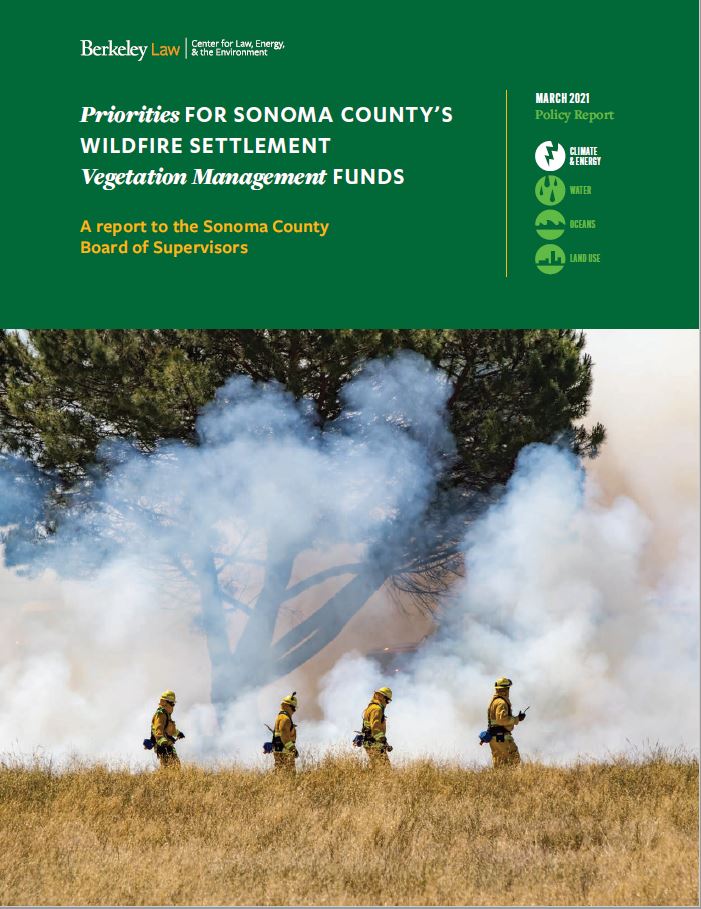
County leaders engaged CLEE to deliver recommendations on how to spend the dollars effectively. Through two expert convenings and stakeholder outreach, CLEE gathered input from leaders in wildfire science, public finance, planning, and vegetation management, among other areas of expertise. One of the convenings focused entirely on local experts, leveraging the wealth of knowledge within Sonoma County and learning from local organizations’ experiences. The other convening included state-level experts who could speak to broader experiences and priorities throughout California.
Both groups’ priorities and insights led to several key recommendations to guide vegetation management spending in Sonoma County. Driving most of these was the fact that a limited pool of near-term funds cannot adequately address the County’s long-term, recurring vegetation management needs; thus, leaders should invest in financing mechanisms, workforce development, and community outreach efforts that can generate new funds and incentivize private action. That said, a portion of funds – approximately one third – should be directed toward the highest-priority actions that can be taken in advance of coming fire seasons, to help reduce near-term risk and accelerate existing initiatives. And, to support effective and efficient long-term investments, the County should create a vegetation management governance capacity. Ultimately, $25 million is insufficient to cover the scale of the need. But it can help jumpstart demonstration projects, fund immediate needs, and leverage additional funds. The key recommendations and principles to guide vegetation management in Sonoma County include:
- Funding immediate vegetation management activities, especially in high-risk and high-priority areas and near key ecosystems. Initial activities should consider specific project zones (such as densely populated areas or areas that burned in recent fires), as well as project types (such as defensible space near buildings or understory thinning in forested areas).
- Centralizing stakeholder coordination and governance to improve efficiency and ensure that the right projects are funded as quickly as possible, especially early action projects before the upcoming fire season.
- Prioritizing equity, community outreach, and education so that all communities benefit from and understand their role in vegetation management actions. Understanding different stakeholders’ needs and keeping open lines of communication will be crucial components of successful vegetation management and are also cost-effective methods of scaling up projects.
- Maintaining relevant and up-to-date data sources for planning and evaluation, so that various analytical efforts and interactive tools draw from the most recent information. Monitoring and evaluation are also critical to tracking vegetation management projects’ impact and scope over time, allowing project managers to adjust implementation as needed.
- Leveraging long-term financial sustainability, so that funds are replenished and Sonoma County can transform the initial $25 million allocation into a much larger, continually renewing source for ongoing vegetation management activities. Options include a revolving fund, financing districts, resilience bonds, new local sales or parcel tax revenue, and leveraging federal and state dollars, among other options.
- Building the local workforce will help Sonoma County tackle both short- and long-term vegetation management needs while creating high-quality local jobs. Workforce development options include a multi-year training program, partnerships with local conservation corps and educational institutions, apprenticeship programs, and labor share programs, among several other options.
Participants also developed a set of principles to guide County vegetation management decisions, including:
- Prioritizing vulnerable communities (including lower-income residents, elders, renters, communities of color, and those most affected by air quality impacts), along with critical infrastructure and special assets
- Incorporating and supporting robust public outreach, engagement, and education at every step
- Accomplishing multiple forest and ecosystem health objectives by performing and monitoring high-quality, science-based treatments
- Recognizing effective vegetation management requires continuous, dedicated implementation in an adaptive management framework
- Leveraging by seeking other funding opportunities and creating sustainable funding mechanisms
While every California county—and indeed every wildfire-prone region in the world—has different circumstances and resources, these ideas could help inform vegetation management conversations beyond Sonoma County’s borders. Wildfires are part of natural systems, but development expanding into wildland areas and hotter, drier conditions caused by climate change increase the likelihood and severity of fire across the state. These worsening conditions, combined with decades of fire suppression, position California for a future of more catastrophic wildfires unless there is a dedicated, coordinated, and locally tailored vegetation management effort to address risks facing forests, ecosystems, and communities.
We hope this report will help Sonoma County and leaders across California take immediate action to mitigate risks during the upcoming fire season and implement a long-term strategy to reduce the severity of wildfires in the years to come.
You can download the report here.
We will be presenting the report findings at the virtual Sonoma County Board of Supervisors meeting today (Tuesday), March 23, 2021, which starts at 8:30 am Pacific Time. You can access the agenda here, which includes Zoom login information, to listen in or offer your own comments.
The climate fight should ultimately benefit all communities, just as they are all part of the solution. Agricultural communities are no exception.
Farmers and ranchers can implement climate-friendly techniques that both sequester carbon and boost profits and long-term sustainability (sometimes referred to as “regenerative agriculture”). Examples of these practices include crop diversification and rotation, cover cropping, low-to-no tillage, rangeland and cropland composting, and reduced chemical inputs. Beyond carbon capture, these techniques and the principles that underlie them can lead to improved soil quality, higher long-term yields and greater yield stability, and resilience to drought, floods, disease, and pests.
Yet financial, logistical and resource barriers stand in the way of greater adoption. To address these challenges, UC Berkeley Law’s Center for Law, Energy & the Environment (CLEE) partnered with the Berkeley Food Institute to convene farmers, policy experts, advocates, investors, and other stakeholders in the farming community for a virtual roundtable on public-private solutions.
The group’s recommendations were captured in a new report released last month, Redefining Value and Risk in Agriculture: Policy and Investment Solutions to Scale the Transition to Regenerative Agriculture. Highlight solutions include:
- Develop a More Robust Research Base: Research institutions should advance the scientific case for regenerative agriculture and standardize measurement protocols
- Reform Crop Insurance: Congress and the US Department of Agriculture’s Risk Management: Agency should reform crop insurance to reflect the risk reduction benefits associated with regenerative practices
- Redefine Risk: Federal and state governments, banks and investors should account for the risk reduction benefits of regenerative practices and reflect those benefits in financing and direct payments
- Advance State-Level Policies: State governments should expand investments in effective existing policies like incentive programs and peer-to-peer support network initiatives
- Prioritize Equity in Agricultural Policies: Government at all levels should develop more integrated and equitable systems to serve farmers, such as streamlined technology platforms and more robust technical assistance
- Urge Landowners and Supply Chain Actors to Enable Regenerative Production: Landowners and supply chains should help promote regenerative farming among tenants and farmers by incorporating flexibility into contracts and removing barriers
Widespread implementation of these solutions could help in multiple ways, from reducing greenhouse gas emissions and other pollution, improving economic conditions in farming communities, and addressing inequalities between rural and urban areas. To learn more, you can download the report here.
With the presidential election over, Joe Biden faces a U.S. Senate that still hangs in the balance. But even with a Democratic runoff sweep in Georgia next month, it will be very divided. So what will be possible for a President Biden and his administration to achieve on climate change?
Agency action, foreign policy changes, and spending can all make a difference on emissions, with any COVID stimulus and budget deals with Congress, if feasible, providing potential avenues for further climate action. Here are some ideas along those lines, broken out by key sectors of the economy.
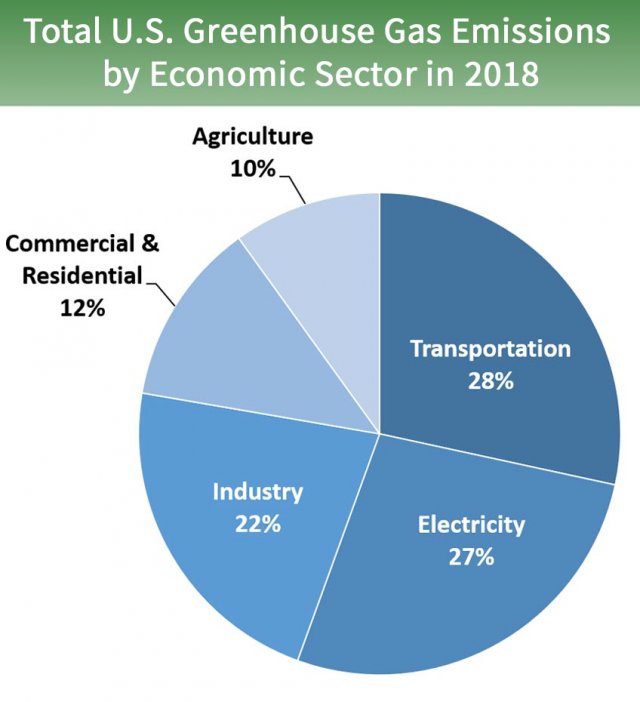
Action on Transportation
As the EPA chart above of 2018 emissions shows, transportation contributes the largest share of nationwide greenhouse gas emissions at 28%. The best way to reduce those emissions is to decrease per capita driving miles through boosting transit and the construction of housing near it, as well as switch to zero-emission vehicles, primarily battery electrics.
Transit-oriented housing is largely governed by local governments, who generally resist construction. Absent state intervention or federal legislation from a divided Congress, the Biden administration will have to make surgical regulatory changes directing more grant funds to infill housing and potentially use litigation and other enforcement tools to prevent and compensate for racially discriminatory home lending and racially exclusive local zoning and permitting practices.
On transit, a Biden administration would be very pro-rail, especially given the President-elect’s daily commuting on Amtrak in his Senate days. If the Senate flips to the Democrats, high speed rail could be a big part of any bipartisan COVID stimulus package, if it happens, which would be a lifeline to the California project that is otherwise running out of money. Other urban rail transit systems could benefit as well, and the U.S. Department of Transportation could favor and streamline grants for transit over automobile infrastructure. Notably, LA Metro CEO Phil Washington, responsible for implementing the nation’s most ambitious rail transit investment program in Los Angeles County, is chairing Biden’s transition team on transportation.
On zero-emission vehicles, Biden may have relatively strong tools to improve deployment of this critical clean technology. First, perhaps through a budget agreement with Congress, he could reinstate and extend tax credits for zero-emission vehicle purchases, which have expired for major American automakers like General Motors and Tesla. Second, he could use the enormous purchasing power of the federal government to buy zero-emission vehicle fleets. And perhaps most importantly to California, his EPA can rescind its ill-conceived attempt at a fuel economy rollback for passenger vehicles and then grant the state a waiver under the Clean Air Act to institute even more stringent state-based standards, toward Governor Newsom’s new goal of phasing out sales of new internal combustion engines by 2035.
Reducing Electricity Emissions
The electricity sectors comes in a close second place, with 27% of the nation’s greenhouse gas emissions. The move toward renewable energy, particularly solar PV and wind turbines, is so strong that even Trump had difficulty slowing it down during his single term in office, in order to favor his fossil fuel supporters. But nonetheless, the Trump administration created some strong headwinds which can now be reversed.
First and foremost, President-elect Biden can drop the tariffs on foreign solar manufacturers, which drove up prices for installation here in the United States. Second, as with the zero-emission vehicle tax credits, a budget deal with Congress could bolster the federal investment tax credit for solar, which steps down from the initial 30% toward an eventual phaseout for residential properties and 10% for commercial properties. The credit could also be extended to standalone energy storage technologies, like batteries and flywheels, if Biden budget negotiators play their hands well (easy for me to say). A Biden administration could also improve energy efficiency by dropping weak regulations on light bulbs and appliances like dishwashers at the U.S. Department of Energy and introducing more stringent ones instead.
Legislatively, any COVID stimulus deal (again, if it happens) could potentially contain money for a big renewable energy buildout, including for new transmission lines, grid upgrades, and technology deployment. In terms of regulations, if Biden is able to get any appointments through the Senate to agencies like the Federal Regulatory Energy Commission (FERC), that agency could make climate progress by simply letting states deploy more renewables and clean tech, including demand response, as well as potentially supporting state-based carbon prices (a move supported by Trump’s FERC appointee Neil Chatterjee, which promptly resulted in his demotion last week).
Slowing Fossil Fuel Production
The two big moves for the Biden administration will be to stop new leases for oil and gas production on public lands (including immediately restoring the Bear’s Ears and Grand Staircase-Escalante national monuments) and bringing back the methane regulations on oil and gas producers that the Trump administration rolled back. As a bonus, his Interior Department could engage in smart planning to deploy more renewable energy on public lands, where appropriate, including offshore wind.
Other Climate Action
The list goes on for how the Biden administration can embed smart climate policy into all agencies and facets of government, with or without Congress. Of particular note, his appointees at financial agencies like the Federal Reserve and U.S. Securities and Exchange Commission could bolster and require climate risk disclosures for institutional and private investors. The U.S. Office of Management and Budget could ramp back up, based on the best science and economics, the social cost of carbon, which represents the cost in today’s dollars of the harm of emitting a ton of carbon dioxide equivalent gas into the atmosphere. This measure provides much of the economic justification for the federal government’s climate regulations. And of course, President-elect Biden can have the U.S. rejoin the 2015 Paris climate agreement immediately upon being sworn in (though the country will need to set a new national target).
Overall, Biden’s win means the U.S. will regain some climate leadership at the highest levels, with much that can be done through congressional negotiations, agency action, and spending. However, the stalemate in the US Senate likely means that any hopes for big new climate legislation will be dashed. As a result, continued aggressive action at the state and local level, as well as among the business community, will be critical to continue to help push the technologies and practices needed into widespread, cost-effective deployment to bring down the country’s greenhouse gas footprint.
One election certainly won’t solve climate change, and the costs continue to rise to address the impacts we’re already seeing from extreme weather. But given the current political climate, the actions described above could allow the U.S. to still make meaningful progress to reduce emissions over the next four years and beyond, even in an era of divided government.
The parallels between the COVID-19 pandemic and climate change are striking. Both events featured stark warnings from scientists about impending disaster. Both required early, short-term mobilization that would head off severe longer-term pain. And both were routinely ignored and laughed at by right-wing denialists, with prominent Fox News pundits and Donald Trump (among others) labeling them both “hoaxes.”
So why do people cling to incorrect beliefs? UC Berkeley recently featured an interview on this question with Celeste Kidd, a computational cognitive scientist at the university who studies false beliefs, curiosity and learning. First, Ms. Kidd described the problem:
All of us stick to beliefs in the face of contradictory evidence. All of us have beliefs that do not match reality. It is unavoidable. But it’s possible that some people are better or worse than others at keeping an open mind. Our previous research suggests that uncertainty makes people more willing to change their mind. The downside of that is that constant uncertainty can make us less willing to make decisions and act, which would make it hard to navigate life.
So can people learn to improve their ability to reconsider beliefs in the face of contradictory evidence? While her research does not yet indicate that training could be effective for intransigent thinkers, she does offer this optimistic note:
But I see hope in the fact that people are fundamentally social and that they seek to engage with one another. People are sensitive to the beliefs of those around them. When those beliefs change, people may reconsider their positions. That’s why talking about what is happening is important, and informed people who know the most should be talking the loudest.
Of course, when everyone thinks they’re informed on a subject, then you end up with a lot of noise. But when the results of certain beliefs lead to undeniable disaster, whether it’s a global pandemic or worsening climate impacts, closed minds do start to change — just hopefully not too late to avert catastrophe.
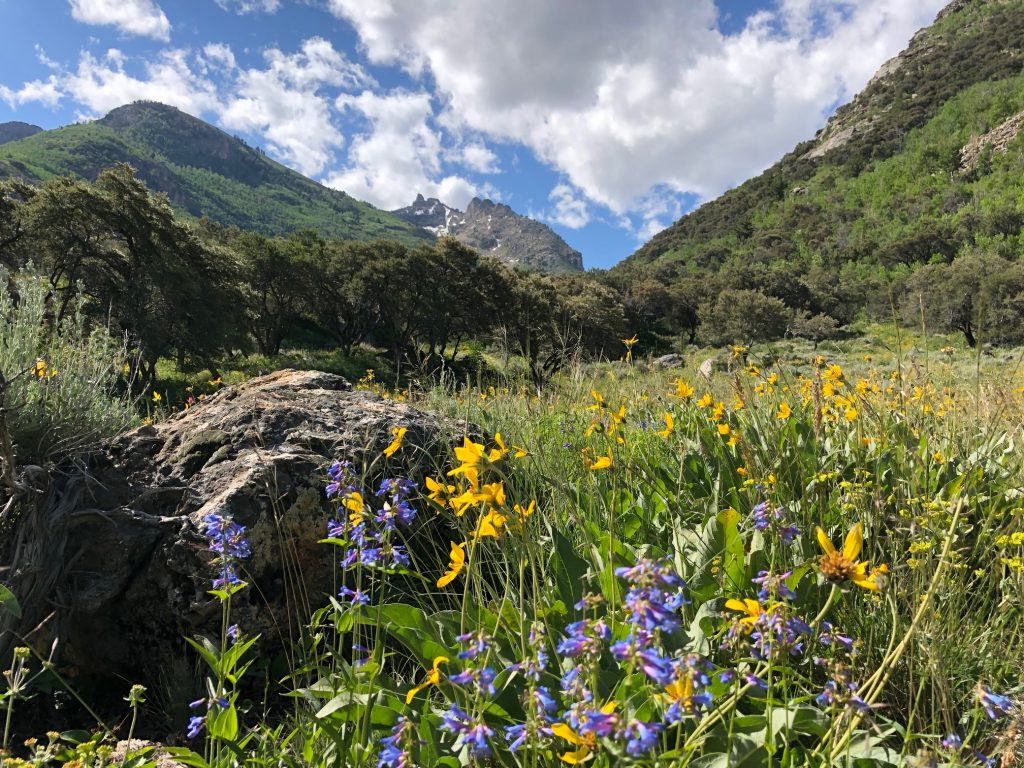
I began working on climate change law and policy on January 20, 2009, the day I joined Berkeley Law, which was coincidentally Barack Obama’s Inauguration Day. So it’s been a full decade for me focusing exclusively on this subject (I focused on related land use and transit issues prior to 2009), roughly coinciding with the 2010s now coming to a close.
As we mark the end of this decade, two things stand out: remarkable progress reducing the price and deploying critical clean technologies, and dispiriting failure to reduce overall greenhouse gas emissions, with more severe climate impacts happening each year.
I noted some of these trends in a foreword to “Climate Change Law in the Asia Pacific” from Berkeley Law, which features articles from scholars in places like Japan, Korea, and Taiwan, as well as California.
To summarize the good news on clean technology:
- From 2009 to 2017, the levelized costs for utility-scale solar photovoltaic dropped 86 percent;
- Wind power levelized costs dropped 67 percent from 2009-2017; and
- Lithium ion battery prices (central to electric vehicles and grid energy storage) have dropped 85 percent from 2010 to 2018.
This progress is the key reason for optimism on climate change. With the price decreases, support for deployment has increased across the political spectrum and allowed for some remarkable success stories on emissions reductions, such as California’s ability to achieve its 2020 carbon goals four years earlier, due primarily to renewable energy deployment.
But despite the progress, we have this sobering data:
- Carbon parts per million have increased from 385 in 2009 to 411 (and counting).
And unsurprisingly, the bill is now coming due. This decade has brought some of the predicted severe climate impacts, such as unprecedented wildfires, droughts, extreme rain events and hurricanes, and warming oceans.
On the positive side, the extreme weather has helped shift public opinion in favor of climate action. But it’s come at a significant cost to human life, happiness, and ecosystems.
Hopefully in the 2020s we’ll see the widespread deployment of clean technologies and other climate-smart practices that we need to stabilize and reduce emissions. And while climate impacts will inevitably worsen, perhaps our ability to withstand them will improve, such as through electricity grid resilience in the face of wildfires and using natural infrastructure to lessen storm surges and flooding.
And to make any of these positives happen, we will need smart policies and public support and political leaders to enact them. I’ve had the good fortune to work on climate policy now for over a decade, and as the 2020s dawn, much work remains.

